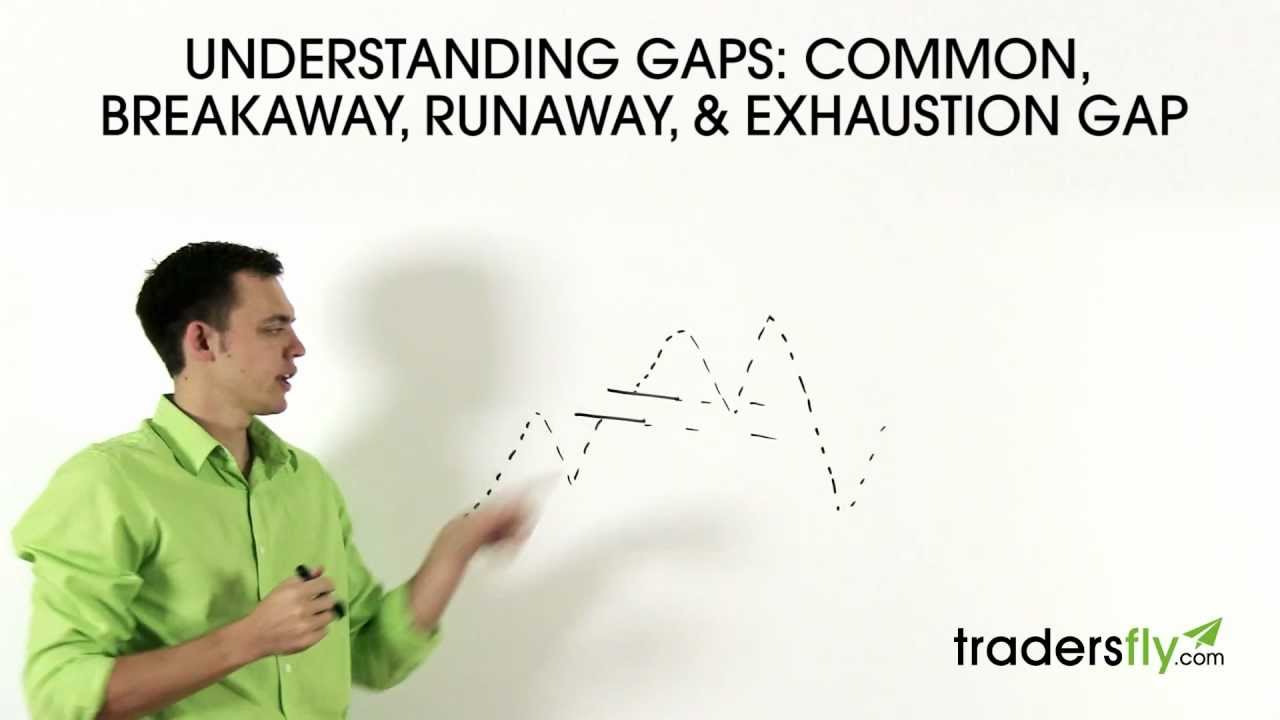What Is a Gap?
-When a stock ends the day at a certain level and then starts at a new level even though no trades took place.
-Gaps are usually from one day to the next.
-The reason is that something within the company or industry can change: earnings report, etc.
-Weekly charts can also have gaps, but that usually happens over the weekend and it isn’t as common.
4 Types of Gaps:
1. Common:
Likely caused by low trading volume.
It will usually be filled (prices slowly revert to that gap).
2. Breakaway
-More meaningful than common gaps
-They can happen in the middle of the trading day
-They have a downward momentum
-Suddenly the stock dips down below the support line. The gap is between the support line and the dip down. This is due to a change in psychology, and people start to sell their shares.
-Make sure you see an increase in volume at the gap point. That is confirmation of the downward move.
-Another way to be sure that the breakaway gap is a healthy gap is if it happens with another pattern (e.g. a descending triangle pattern).
3. Runaway
-Similar to the breakaway gap
-Instead of going to the down side it is going to the up side
-It is basically a stock price jumping up to a new level (typically due to product releases, news events, etc)
-Anything that creates positive sentiment creates a runaway gap
-There are three possibilities it can go through:
1. Downard trend and back up, hops and continues to go up
2. Upward incline, gap to incline
3. Downward trend to a slingshot upward
-Runaway gaps are more powerful when they come out of an ascending triangle or trend line.
4. Exhaustion
-Very good to trade with, if you watch them
-They can be dangerous if you are new to the stock market or are not spotting them correctly
-They happen when a stock shoots up, jumps and continues to trend up, but will eventually decline
-This can happen with a decline as well (declines, jumps down, continues to decline and then shoots up)
-You want to be cautious with these gaps because they typically happen in a state of panic
Continue to learn with me at: http://tradersfly.com/
Check out my courses at : http://rise2learn.com
Facebook Fan Page: http://www.facebook.com/tradersfly/
Get My Charts on Twitter: https://twitter.com/tradersfly/
source


















Now is the seventhday to keep it holy ,and on the eightday the lord starts the end
Gap thoery is true ,and on the eightday he will destroys them all
what happens if you put a stop loss in your trade and the cap prevents your stop loss from triggering?
do you lose your money? because it keeps going down as if you never put a stop loss in there? or will it trigger with the broker and the broker buys your stock instead of the people in the market
Kindly double-check Breakaway Gap, as per my understanding, they can happen either side e.g. on upside from a rectangle pattern.
Nicely taught! Thank you for your free teaching. Sending good vibes
.I have a question, on april 6th australian parlimentary elections are going to happen,when market will open on monday will it create a bigger gap in aud pairs.?
true #sunilkumarsaini
Love your videos, truly the best on the Tube, thank you for helping others.
Awesome teacher. One question please. Does all the gap need to be filled?
wonderful explanation!
are runaways and breakaway gaps closed again ?
Wow Sasha, This video clearly explains the theory and psychology of the traders in each of the gaps, keep the good work going, Thank you so much.
How would one trade a gap down? Everyone teaches gap "up" and go but what about downn is there a long strat to play here??
i hit like button to your video. Nice information.
Dont gaps also occur due to pre-market trading? You mentioned no trading between gaps.
If I enter a positional trade which I plan to hold for 3 months or more, When I execute the trade with a bracket order or with a trailing stop loss, will I be covering my risk against any major gap up or gap down?
Thanks its very helpful?
You should be fund manager
Wow so excited )))
you are marvelous , my regards
Great teacher, thank you for making this understandable in a simplistic way.